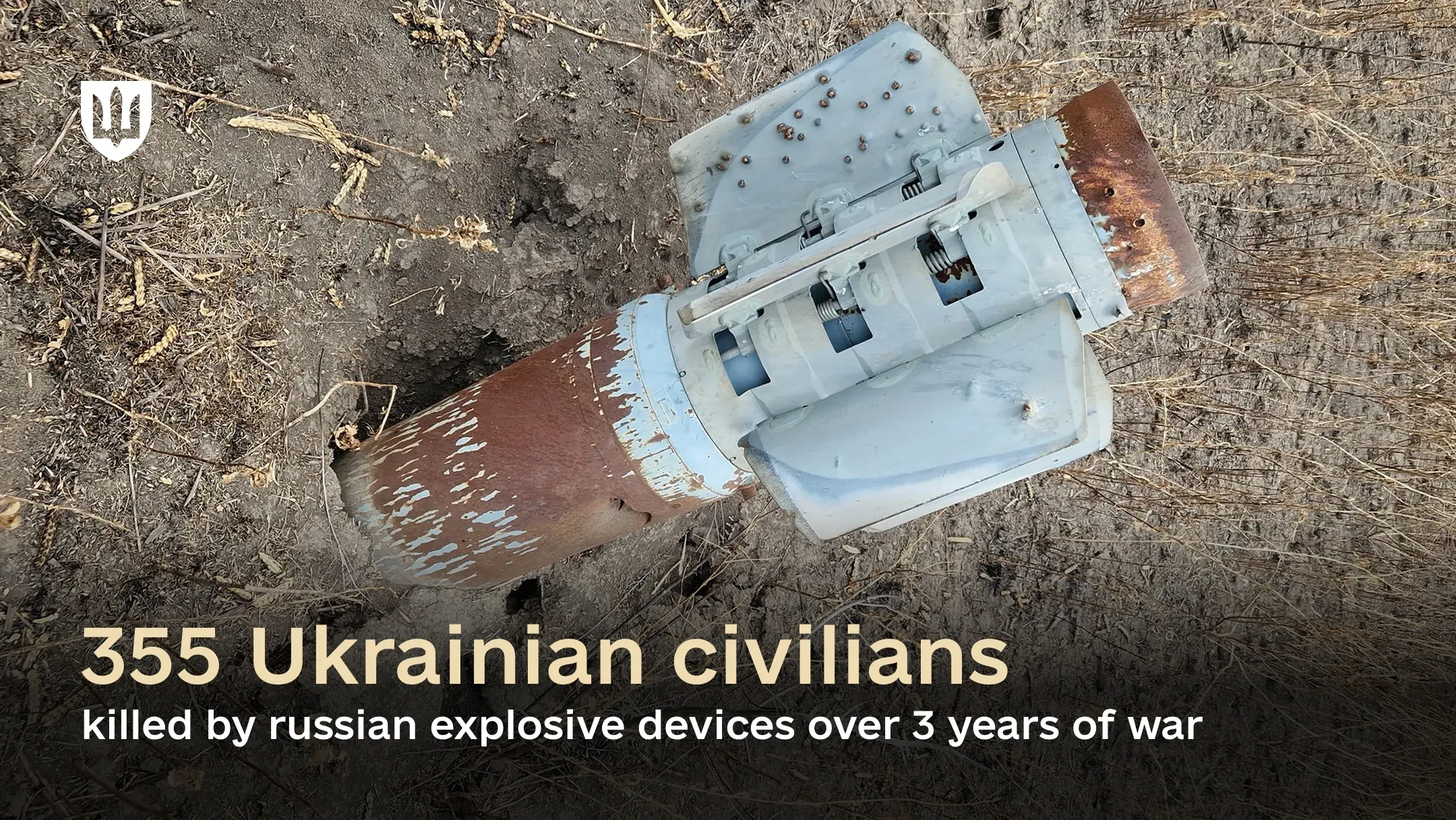Over three years of the war, 355 Ukrainian civilians, among them 18 children, have lost their lives as a result of russian explosive ordnance

Since the onset of russia’s full-scale invasion, 811 incidents with civilians due to explosive remnants of war have been recorded. A total of 1,158 civilians have been affected, with 355 fatalities, including 18 children.
This was reported by Colonel Oleh Shuvarskyi, Head of the Mine Action Department and Deputy Head of the Main Directorate of Mine Action, Civil Protection, and Environmental Safety, during a workshop organized by the Ministry of Defence of Ukraine with the support of the OSCE.
According to him, the threat posed by explosive ordnance impacts the lives of over 6 million Ukrainians, particularly in de-occupied territories.
Colonel Oleh Shuvarskyi noted that russian forces often deploy mines indiscriminately, including in agricultural fields, residential areas, and on public roads. Approximately 75% of incidents involve mines.
The most heavily contaminated regions remain Kharkiv, Mykolaiv, and Kherson Oblasts, which collectively account for over 50% of all incidents.
“Elements of cluster munitions pose a particular threat both during the clearance of explosive ordnance in de-occupied territories and in the course of humanitarian demining efforts, due to incidents caused by their detonation. The use of such munitions by russian forces hampers recovery efforts in these areas, including the restoration of transport infrastructure, heating, gas and water supply, power lines, and other critical infrastructures essential for sustaining life in de-occupied regions. Additionally, the poor quality of russian engineering munitions and their prolonged storage often lead to the failure of self-destruct mechanisms in certain types of these munitions, making them unpredictable and extremely hazardous. Moreover, many modern russian mines are equipped with seismic and magnetic sensors, significantly complicating their neutralization,” Colonel Oleh Shuvarskyi explained.
He further highlighted that many modern mines are manufactured with plastic casings and contain minimal metal components, making them difficult to detect, particularly with mine detectors. Additionally, according to enemy operational guidelines, a portion of mines in heavily mined areas are set to be non-retrievable or function as booby traps, requiring significant time, specialized skills, and practical expertise for safe neutralization.
The Head of the Mine Action Department also informed the participants of the workshop ‘Modern Challenges and Innovative Approaches in Mine Action’ that since the onset of the full-scale aggression, demining units of the Security and Defence Forces have identified and neutralized nearly 920,000 explosive ordnance items.